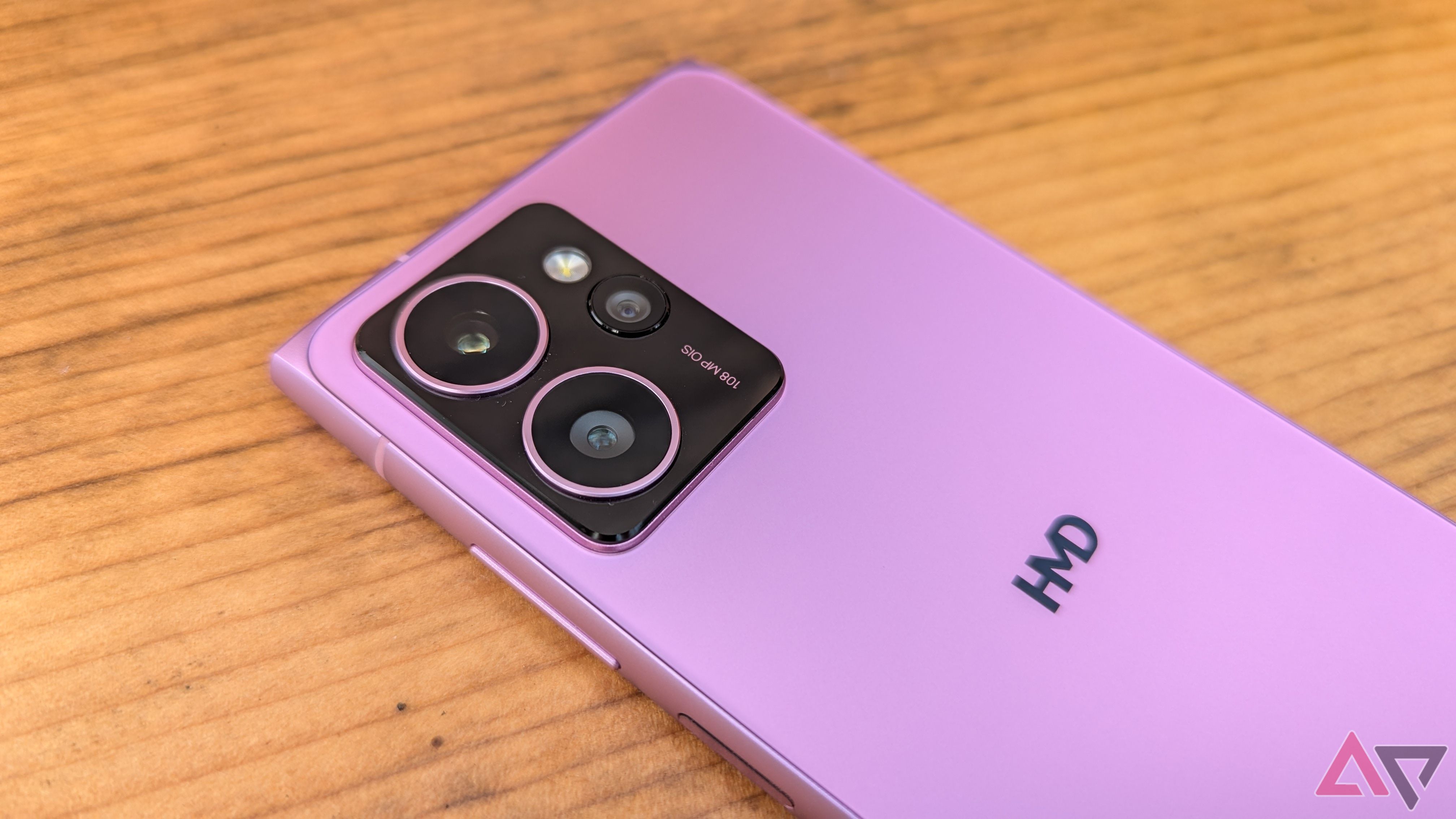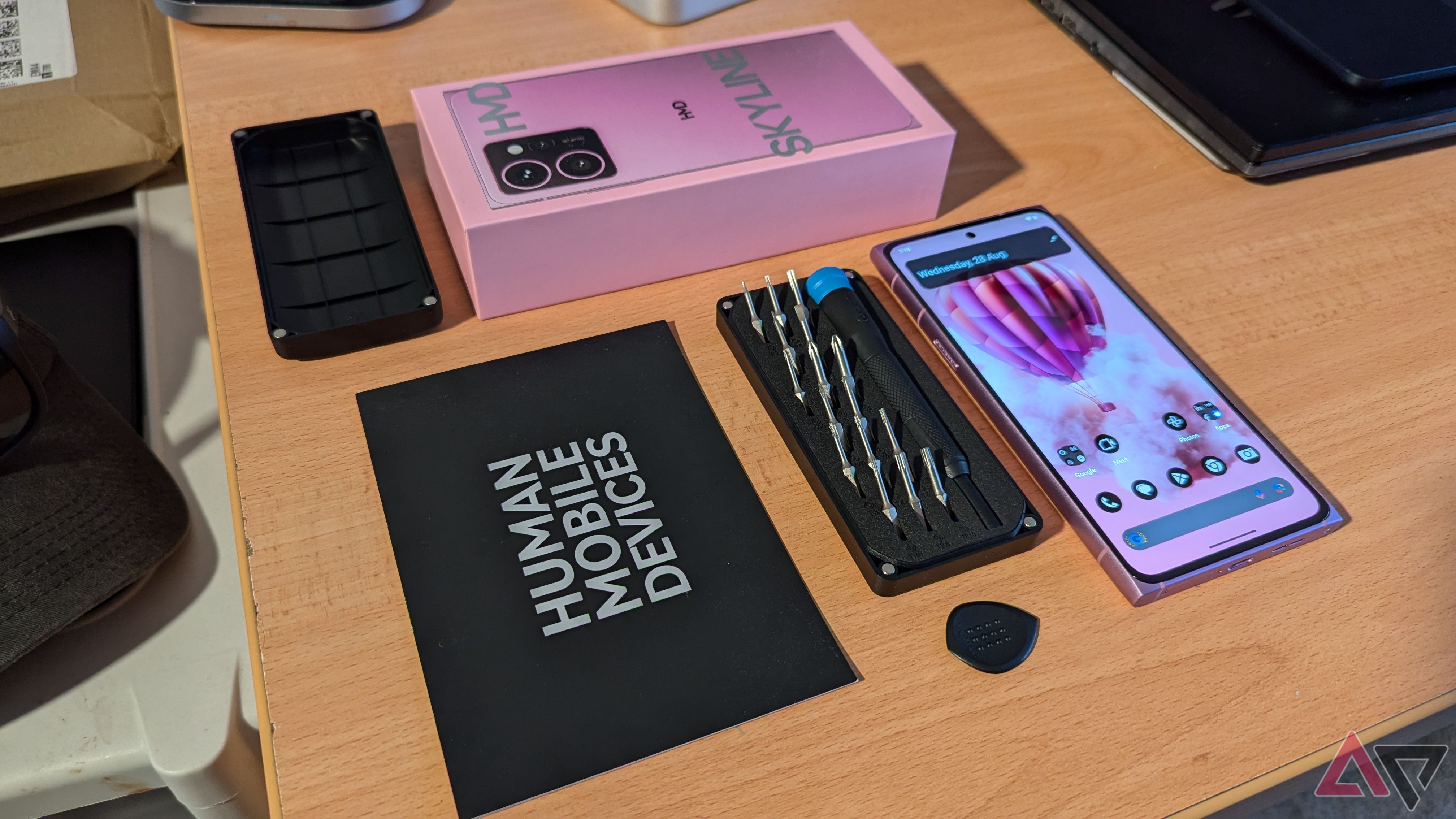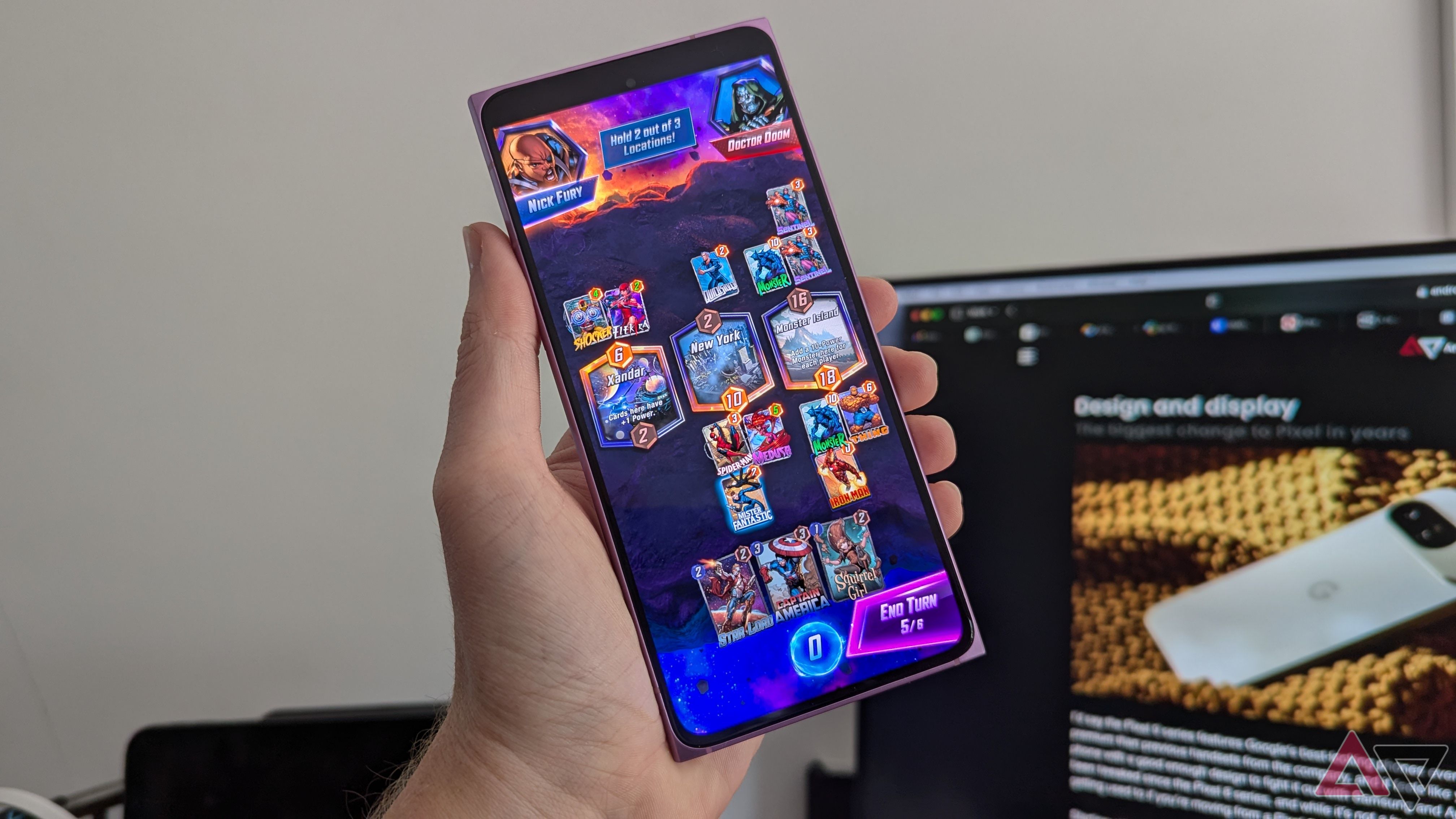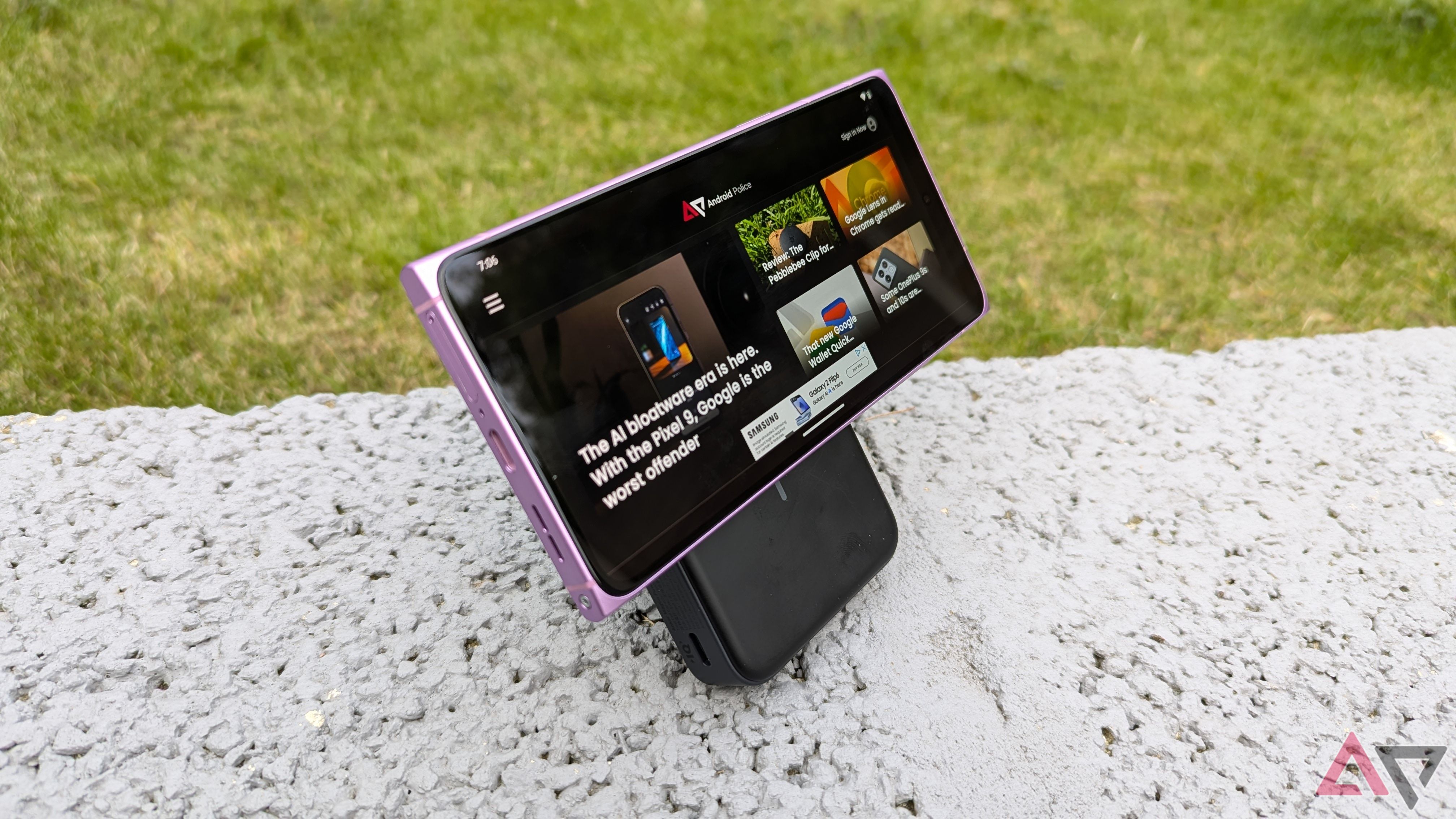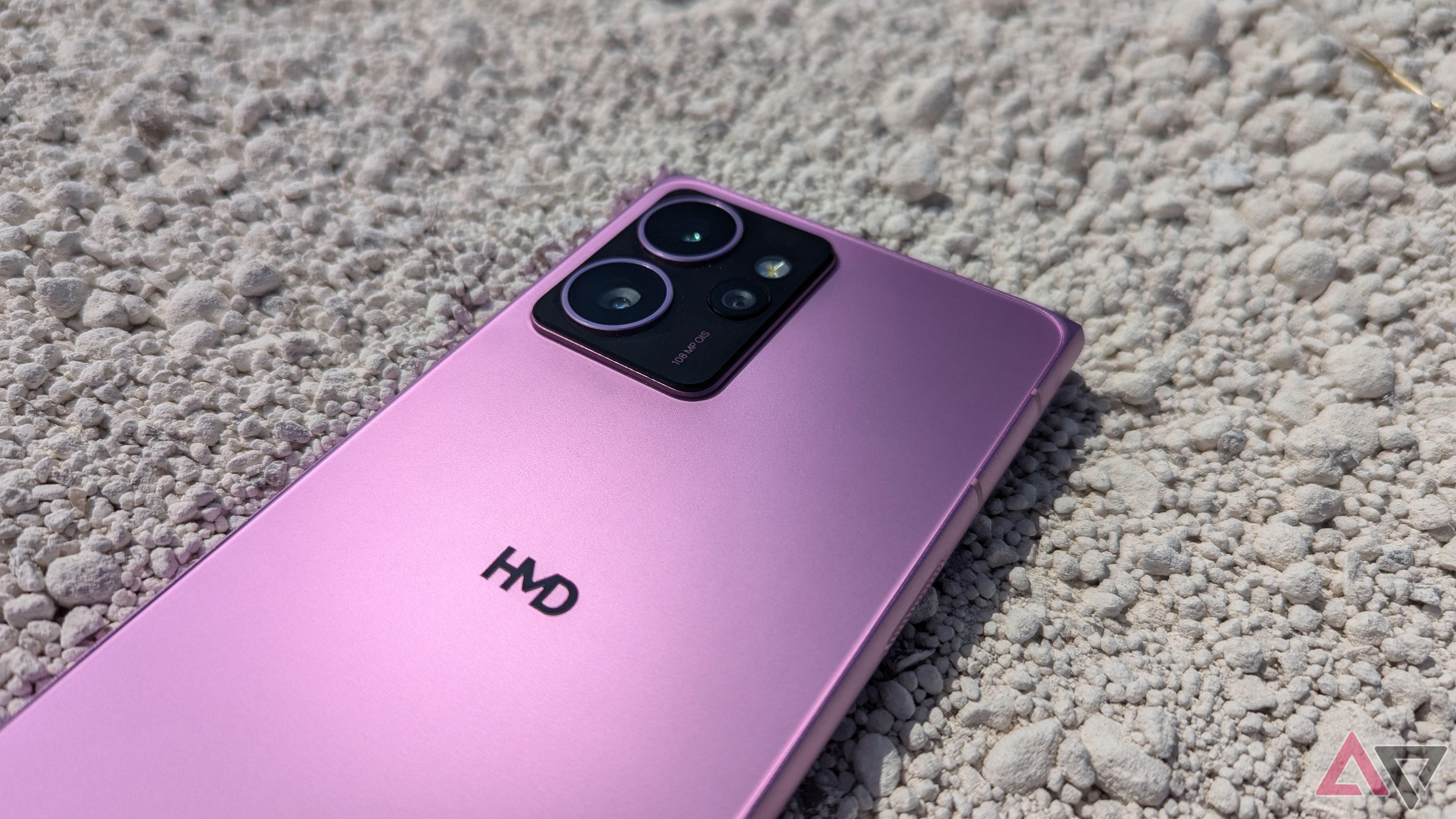Standing out in a cluttered Android phone market isn’t easy. Whether it’s design, hardware, software, or simply the price tag, brands need a certain “X” factor to make their mark. The Nothing Phone 2 offers a striking LED design, the Pixel 8a still rocks the camera department, and the price of Samsung’s A-series lineup can rarely be beaten. So, what tricks does the HMD Skyline have up its sleeve? Repairability and Qi2 charging — and it’s a good look.
Being the first to bring the MagSafe-like Qi2 standard to Android phones is one thing, but easy self-repair (thanks to a partnership with iFixit) is a huge plus for the clumsy ones among us. There are other perks, too: a decent display, long-lasting battery life with fast charging speeds, and interesting features like its configurable Custom button. However, unique traits can only take a smartphone so far, especially if it’s hindered by a clunky design and last-gen specs. HMD has clearly put the legwork in to make its Skyline stand out, and it sports a couple of features that other major Android phones should take heed of, but it still falls short in some areas compared to its competition.
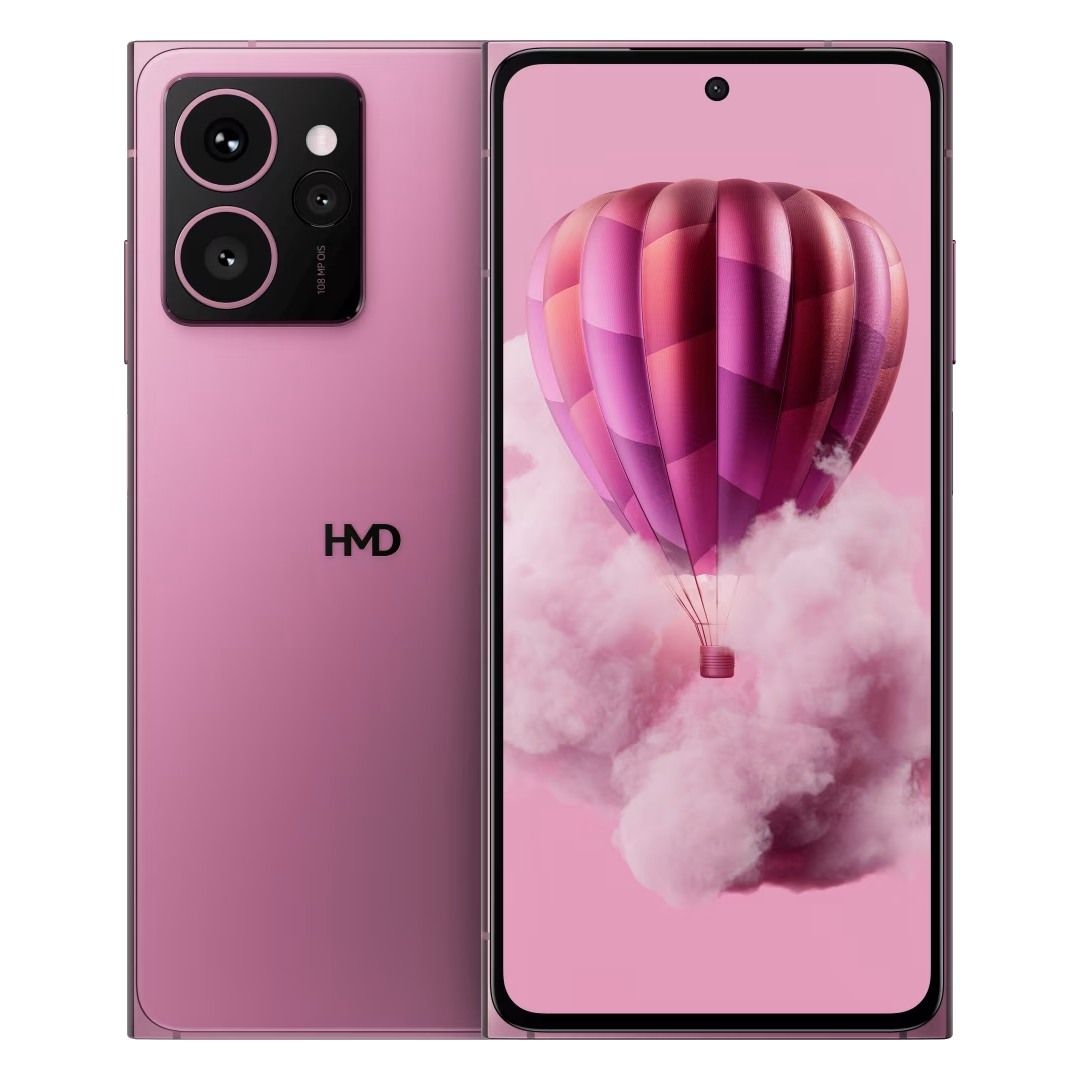
HMD Skyline
The HMD Skyline finally brings magnetized Qi2 charging to Android, and it has a long-lasting battery and fast charging speeds to match. Its self-repair approach means swapping out the screen, back cover, and the battery is easy, while its decent (if a little dim) 144Hz display, clear 50MP selfie camera, and handy Detox mode are welcome traits for a midrange phone. Its design doesn’t bring much appeal, though, and if you’re after up-to-date specs, it won’t completely satisfy your needs.
- Qi2 support makes charging wirelessly a breeze
- Easy to repair with iFixit tool kit
- Custom button is a nice addition
- Boxy, uncomfortable design
- Cameras are just average
- Only two years of OS support
Price, availability, and specs
Midrange means more these days
The HMD Skyline costs $500, settling it bang in the middle of the midrange phone price range. It’s a fair and attractive price point for those who can’t be bothered to pay for flagship features, and it has the specs to match. Unfortunately, that means it’s hard to compete with competition like the $500 OnePlus 12R or $499 Google Pixel 8a, which both offer flagship killer features and specs. Still, you’ll be getting a solid offering for its cost.
Its repairable nature also needs to be factored in, as it makes replacing a screen or a battery far more affordable than most smartphones. However, it’s important to note that HMD Skyline replacement parts via iFixit aren’t currently available. I reached out to the company to determine when they could be expected, but no specific date was given. The HMD Skyline is available in the US and UK in stores including Amazon and the HMD store. As of writing, it is currently out of stock but is sure to come back soon. It’s available in two colors: Twisted Black and Neon Pink.
Design and display
Awkward in style
HMD pitches its Skyline as a smartphone for “creators,” with its selfie camera and replaceable form factor taking center stage. However, its design doesn’t offer the appeal it deserves. While not too dissimilar to the Samsung Galaxy S24 Ultra, it has more in common with the boxed-out design of a Microsoft Lumia phone. Its blocky corners and thickness aren’t the most appealing, and they surround a circular outline that looks like what should have been the Skyline’s actual shape. It detracts from the phone’s style; there isn’t much that declares it’s an HMD-made smartphone other than its logo centered on the back cover.
Coming in at 159.7 x 75.6 x 8.9mm and weighing 208g, it’s quite a beefy phone. While I can use it comfortably enough with one hand, its edges are still a pain point, and its shape is apparent when slipped into a pocket. Despite all this, there are a few design traits that work well. Its power button is flushed into its right side along with accessible volume bottoms, and it also acts as a fingerprint reader. Yes, fingerprint scanners are generally found under the display on phones these days, but I’m a fan of picking up a phone and naturally placing my thumb on the side where it needs to be unlocked (if the face unlock feature doesn’t work fast enough).
There’s also a flushed-with-grills Custom button placed on the left side, similar to Apple’s latest iPhones. This can be customized to perform a quick action of your choosing. By default, a long press will switch between vibrate and sound, while a double press will activate the flashlight. Having easy access to functions you’d normally have to turn your phone on to access is incredibly handy, and double pressing the power button even goes straight to camera mode à la Pixel phones. These are minor yet worthwhile design choices that many will appreciate.
Understandably, its replaceable back cover and display contribute to its blocky style and make the display bezels fairly pronounced. Thankfully, these become unnoticeable over time, as the pOLED 6.5-inch display with a 1080 x 2400 (FHD+) resolution and up to 144Hz refresh rate steal the show. While it isn’t the best display around, it still offers buttery-smooth scrolls, clear details, and vivid colors when watching shows or navigating social media. While playing games such as Marvel Snap or Call of Duty: Mobile, it’s a treat to see cards and bullets glide across the screen without any stutters. And if you don’t want to deplete its battery, its Adaptive display mode (that reaches up to 120Hz) solves that problem.
One setback is its 1,000 nits of peak brightness, which is far behind other competitors that can reach 2,000 nits and beyond. It’s fine to look at in dark environments, but it struggles outside in natural bright sunlight. It’s still visible, but it says something if I’m squinting at a screen just to open an app. The HMD Skyline may not be a looker, even in its striking Neon Pink, but it has a display that will catch your eye.
Other hardware and what’s in the box
Repairs at your fingertips
As mentioned, one of HMD Skyline’s biggest draws is its repairability. With a single screw at the bottom, you can easily take off the back cover, remove the battery, and more with an iFixit tool kit and easy-to-follow replacement guides. But the kit doesn’t come with the phone, which is a shame but understandable. However, only a Minnow Driver Kit is needed to take it apart, and that will only set you back around $15. It’s simple to use, and the guides offer a step-by-step solution to ensure a replacement is completed correctly.
Otherwise, it’s your standard fair inside in the box: the Skyline, a USB-C cable that matches the phone’s color without a charging brick, an ejector pin tool, and some documentation. No surprises here.
As for the phone’s audio, it can fill a room with its volume, but it sounds very hollow, absent of any bass. It does a serviceable job, but don’t expect high-definition clarity when watching YouTube videos or listening to the latest hits on Spotify. There is Bluetooth 5.2 connectivity (the lack of Bluetooth 5.3 with its enhanced connectivity is noted), meaning wireless earbuds or headphones are the best way to listen to your tunes.
Software and performance
Behind the times
Midrange phones offer a balance of performance and affordability, but there will always be some drawbacks to suit the price range. With the HMD Skyline, it’s clear that it has looked to the past to keep its cost low. There are no current specs here, but there is at least a near-identical stock version of Android 14 onboard with a drizzle of HMD.
If you’re used to a clean Android OS, you’ll be well-versed in navigating the Skyline. There’s a “My Device” HMD app that sets it apart for monitoring your device’s health and looking up support guides. This isn’t an app users will often be using, nor is the bloatware that’s already included (unless you want to), such as Booking.com, Facebook, Fitbit, and a money-saving Kindred app. Otherwise, everything is just as it seems, and there aren’t any AI features to mess around with.
One initially interesting feature is its Detox mode, which isn’t available yet but is set to arrive soon. It’s geared to block access to specific apps and their notifications on a set schedule, allowing you to focus and not be distracted by social media or other bothersome apps. Sound familiar? This type of feature is already available in Focus mode on Android devices, and I restricted app access on the Skyline through it.
However, Detox mode also allows you to silence specific people so you don’t get notifications from them, and it lets you categorize apps into different modes, such as “Business” or “Games.” Since the feature isn’t currently available, I couldn’t test it myself, but I’m unsure of its usefulness, considering Focus mode is already available.
This isn’t a powerhouse, so playing games at their highest settings isn’t ideal, but it can still blitz through everyday tasks.
With Google and Samsung offering seven years of Android OS and security updates and even OnePlus with four years, it’s a shame the HMD Skyline only gets two years of OS updates and three years for security. This means you’ll only get up to Android 16 before it stops updating, cutting the phone’s longevity short. In a way, this defeats the purpose of its ease of repair, especially since users will only have it for two years before considering an upgrade.
Equipped with a Snapdragon 7s Gen 2 chip, 8GB of RAM, and 256GB of storage, there’s enough power to comfortably switch between apps, open multiple tabs on browsers like Chrome, and play games without any hiccups. But it’s still a chip from yesteryear, meaning you won’t get the high-flying performance we see in current-day mobile CPUs. For the same price, the OnePlus 12R comes with a Snapdragon 8 Gen 2, and you can bet it blows the Skyline’s Geekbench multicore score of 2,920 out of the water. This isn’t a powerhouse, so playing games at their highest settings isn’t ideal, but it can still blitz through everyday tasks.
Battery life and charging
Hello, Qi2 charging
With the relatively new Qi2 standard, Apple’s iPhones aren’t the only smartphones that can make use of magnetic wireless charging. The HMD Skyline is the first Android to properly implement Qi2 support, and it’s a standard that I hope future Android phones adhere to. Being able to securely stick the Skyline on a Qi2 or MagSafe-supported charger without a special case is fantastic, even if it’s at somewhat of a low but efficient 15W charge. It means I can charge on the go without any wires.
Using magnets to perfectly align with a phone’s coil offers the best charging speeds, and I charged the Skyline from 15% to 100% in just over two hours while using an Anker MagGo Power Bank. It also supports 33W wired charging, powering up the device from 20% to 100% in around an hour. These are solid speeds for a midrange phone, even if it can’t quite match some Androids that offer upwards of 60W wired charging.
The battery itself packs a 4,600mAh capacity, which is strong enough to get me through a whole day performing average tasks like watching YouTube videos, listening to music, replying to texts, and playing a few rounds of Marvel Snap. It will have enough juice to last a few hours the next day before needing a boost, and that’s more than enough for your average Joe.
Camera
Plain average
Used main camera in the first image, ultrawide in the second, and telephoto 4x zoom in the third.
The HMD Skyline has a 108MP main camera with autofocus, making for some solid shots that capture lighting well and deliver accurate colors — for the most part. It does well enough to take attractive snaps of scenery and people, as does its 13MP ultrawide and 50MP telephoto with 4x zoom, but these won’t deliver the “wow” factor you might expect from, say, a Pixel phone. Photos will come out with backlighting that’s a tad too bright or with a little too much visual noise, although its 4x zoom does a fine job of offering clear details.
There are a few settings to tinker with, including a beautifier scale, HDR mode, aspect ratio options, and more, but nothing is upscaled or modified post-shot automatically. What you see is what you get, although color and lighting can be adjusted automatically via Google Photos. This isn’t anything new for midrange phones, but as shown in the photos above, the 108MP main lens can capture the bright blue sky, the sun shining on tree branches, and the nice green hues of its leaves. The 13MP ultrawide also does a nice job, even if it looks a bit cluttered. As for the 4x zoom, there is still great detail in each of the leaves and stems of branches.
Used main camera in the first image, ultrawide in the second, and telephoto 2x zoom in the third.
This is reflected in nearly all the shots I took, but it couldn’t quite handle backlighting as well. It makes objects look far too dark, even if they are light enough to see with the naked eye. The ultrawide struggles with this even more, as colors sometimes come out warped. This isn’t a deal-breaker, though, but since this is a phone for “creators,” it could have used a few more enhancements.
The 50MP front camera is a different story, as shots are detailed and filled with favorable colors, especially in Portrait mode. The selfie I took captured my slightly sunburned skin, the flecks of ginger in my facial hair, and the color of my gray shirt in great detail, all while blurring out the background for a natural bokeh effect. The selfie camera is a winner, and that’s a neat perk for posting pictures on social media.

Speaking of selfies, there’s also a Selfie Gesture mechanic you can use to take a shot. Putting up a peace sign, thumbs up, finger heart sign, or two-hand heart sign will activate a timer on the front camera to snap a shot. It isn’t anything new, but it’s a great way to quickly pose for a selfie.
Competition
Unique, but is it enough?
The HMD Skyline is the only current Android with Qi2 wireless charging, and its repair-it-yourself design helps it stand out from its competition, but other Androids still have wireless charging capabilities and can be fixed by their users with the right tools via iFixit. It still has the same competition as any, and two fierce contenders are the OnePlus 12R and Pixel 8a. Both are midrange phones set at the same price, and they come with far better specs than the Skyline.
From the OnePlus 12R’s Snapdragon 8 Gen 2 chip, 6.78-inch OLED display, and 5,500mAh battery to the Pixel 8a’s neatly compact and charming design, brilliant cameras, and fantastic software support, the HMD Skyline stands little chance against these alternatives. Of course, if magnetic wireless charging is an important factor, the Skyline still offers fine qualities befitting its price. However, it’s difficult to recommend it as the go-to midrange phone when its competitors one-up it in nearly every area. Its two years of OS upgrades don’t help it either, even when compared to the OnePlus’ now-limited four years of support.
Should you buy it?
When it comes down to it, the HMD Skyline is the phone we need, but not the phone I want. The appeal of having an affordable repair-it-yourself smartphone with next-gen Qi2 wireless charging is strong, especially in a crowded sea of Android phones. Throw in its strong battery life (with a replaceable battery), adequate performance, and unique features like its Custom button, and there are plenty of reasons why HMD’s “flagship” phone is an attractive option for many.
But it’s behind the times in a few areas that also matter. For one, its boxy, thick design doesn’t shout “This is for creators,” and it only makes its display bezels that much more noticeable. Its cameras offer some solid, detailed shots, especially its 50MP selfie lens, but its rudimentary features now pale in comparison to the AI camera magic we’ve come to know with other competitors. Then there’s the two years of OS upgrades and three years of security patches, meaning its software limits its repairable hardware offering.
Drawbacks are expected from a midrange phone, but the HMD Skyline still does enough to mark its spot as a fine Android phone to grab. While it’s by no means a flagship killer, it makes its statement on how the future of Android phones could look thanks to its repairable factor and Qi2 charging. If a midrange phone with these unique features piques your interest, the HMD Skyline will suit you. Otherwise, there are plenty of other fantastic midrange Android phones worth your attention.

HMD Skyline
The HMD Skyline finally brings magnetized Qi2 charging to Android, and it has a long-lasting battery and fast charging speeds to match. Its self-repair approach means swapping out the screen, back cover, and the battery is easy, while its decent (if a little dim) 144Hz display, clear 50MP selfie camera, and handy Detox mode are welcome traits for a midrange phone. Its design doesn’t bring much appeal, though, and if you’re after up-to-date specs, it won’t completely satisfy your needs.
Source link

